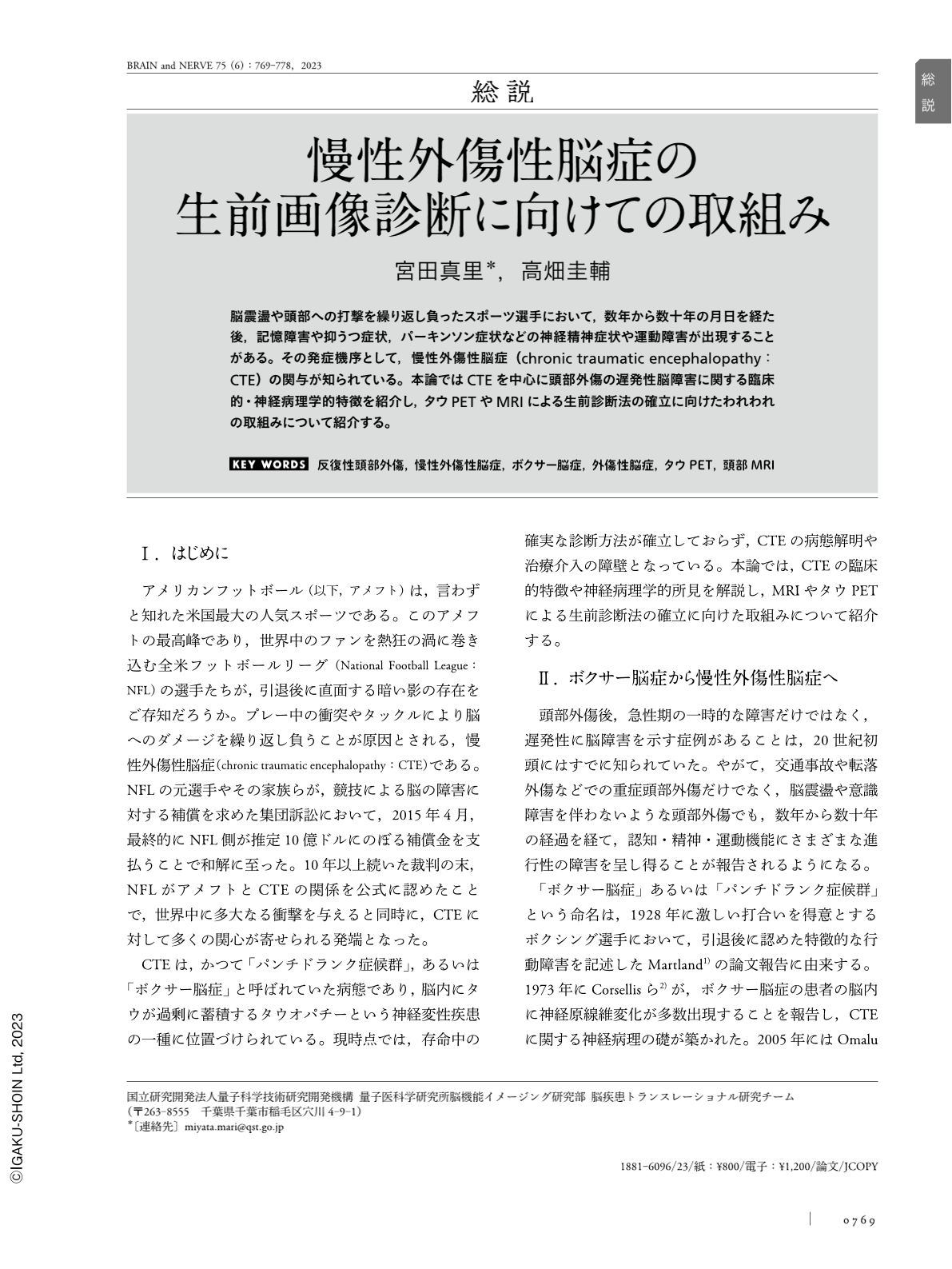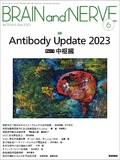Japanese
English
- 有料閲覧
- Abstract 文献概要
- 1ページ目 Look Inside
- 参考文献 Reference
脳震盪や頭部への打撃を繰り返し負ったスポーツ選手において,数年から数十年の月日を経た後,記憶障害や抑うつ症状,パーキンソン症状などの神経精神症状や運動障害が出現することがある。その発症機序として,慢性外傷性脳症(chronic traumatic encephalopathy:CTE)の関与が知られている。本論ではCTEを中心に頭部外傷の遅発性脳障害に関する臨床的・神経病理学的特徴を紹介し,タウPETやMRIによる生前診断法の確立に向けたわれわれの取組みについて紹介する。
Abstract
Chronic traumatic encephalopathy (CTE) is a neurodegenerative disease associated with repetitive mild traumatic brain injury (rmTBI). Clinically, CTE experienced by athletes with rmTBI can lead to long-term neurological impairment, including memory disturbances, Parkinsonism, behavioral changes, speech irregularities, and gait abnormalities, formerly described as punch-drunk syndrome and dementia pugilistica. CTE has gained significant public interest owing to dramatic cases involving retired professional athletes wherein severe behavioral problems and tragic incidents were reported. However, no reliable biomarkers of late-onset neurodegenerative diseases following TBI are available, and a definitive diagnosis can only be made via postmortem neuropathological examination. CTE is characterized by abnormal accumulation of hyperphosphorylated tau proteins. Neuropathological studies have revealed that CTE demonstrates a unique pattern of tau pathology in neurons and astrocytes and accumulation of other misfolded proteins such as TDP-43. Furthermore, gross pathological findings were revealed, especially in severe CTE. Thus, we hypothesized that objective neuroimaging patterns linking the history of rmTBI or CTE might be established using tau positron emission tomography (PET) and magnetic resonance imaging (MRI). In this review, we present the clinical and neuropathological features of CTE and our efforts to develop a prenatal diagnostic method using MRI and tau PET. The unique findings of tau PET images and various signal and morphological abnormalities on conventional MRI in retired athletes with rmTBI may be useful in diagnosing CTE.

Copyright © 2023, Igaku-Shoin Ltd. All rights reserved.


